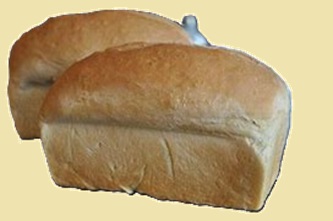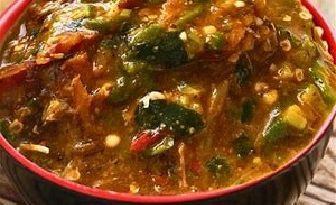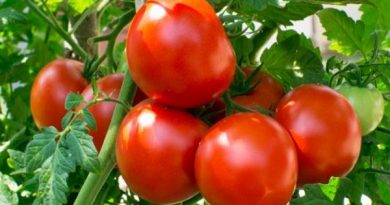Agege Bread Ingredients: Easy Homemade Nigerian Bread
Agege Bread Ingredients: Easy Homemade Nigerian Bread
The Cultural Significance of Agege Bread
Nigerian cuisine is a fusion of diverse flavors and traditions, reflecting the country’s rich cultural heritage.
Among the many beloved staples, Agege Bread stands out as a household favorite, cherished for its soft texture and slightly sweet taste.

Named after the Agege neighborhood in Lagos, this bread has transcended regional boundaries, becoming a staple in Nigerian homes and communities around the world.
Whether enjoyed fresh from a bakery or homemade, Agege Bread is more than just food—it’s a symbol of comfort and nostalgia.
Agege Bread Ingredients: Why Agege Bread is a Household Favorite
Agege Bread is more than just a breakfast staple; it plays an essential role in Nigerian cuisine.
It pairs beautifully with popular dishes like akara (bean cakes), fried eggs, and various spreads such as butter or jam.
The bread’s history dates back to the colonial era when British baking techniques merged with local flavors, evolving into the beloved bread we know today.
Its soft, slightly dense crumb and lightly sweet flavor make it an excellent companion to both savory and sweet dishes.
If you’ve ever wanted to recreate this iconic bread at home, this guide will walk you through everything you need to know.
Agege Bread Ingredients
To make authentic Agege Bread, you’ll need a few essential ingredients. Each component plays a crucial role in achieving the perfect texture and taste.
Bread Flour: The Foundation of Softness
The key to achieving Agege Bread’s signature chewiness is strong bread flour.
This type of flour has a higher protein content than all-purpose flour, helping to develop gluten that creates a stretchy, elastic dough.
While all-purpose flour can be used in a pinch, bread flour yields a more authentic, airy result.
Sugar: Balancing Sweetness and Fermentation
Sugar serves two vital roles in Agege Bread. First, it adds a mild sweetness that enhances the overall flavor.
Second, it feeds the yeast, promoting fermentation and ensuring a good rise.
The result is a subtle sweetness that complements both sweet and savory toppings.
Yeast: The Secret to a Perfect Rise
Yeast is the leavening agent that makes the bread rise by producing carbon dioxide gas.
Both active dry yeast and instant yeast work well for this recipe, though instant yeast is more convenient as it doesn’t require proofing.
Always check the freshness of your yeast—expired yeast won’t activate properly, leading to dense bread.
Salt: Enhancing Flavor and Regulating Fermentation
Salt is essential for balancing the sweetness and controlling the yeast’s activity.
Without it, the bread may taste bland and rise unevenly. A small amount of salt ensures a well-rounded flavor and consistent texture.
Butter or Margarine: Adding Richness
Adding butter or margarine gives the bread a tender crumb and enhances its flavor.
Butter is preferred for its rich taste, while margarine is a good dairy-free alternative. The fat content helps keep the bread soft and slightly flaky.
Water or Milk: Achieving the Right Consistency
The choice of liquid—water or milk—affects the final texture. Water creates a lighter bread, while milk adds richness and a slightly creamy consistency.
Some recipes use a combination of both for the best of both worlds. Ensure the liquid is lukewarm to help activate the yeast effectively.
Step-by-Step Guide to Making Agege Bread
Making Agege Bread at home is straightforward, but attention to detail is key. Follow these steps to ensure a perfect loaf.
- Mixing the Dry Ingredients
Combine the bread flour, sugar, salt, and yeast in a large mixing bowl. Stir well to distribute the ingredients evenly.
Be mindful not to let the yeast and salt come into direct contact, as salt can weaken yeast activity.
- Adding Liquid to Form the Dough
Gradually add the lukewarm water or milk while mixing. Stir continuously until a soft dough forms.
If the mixture is too dry, add a little more liquid, one tablespoon at a time, until the dough reaches a soft, pliable consistency.
- Kneading for the Perfect Texture
Transfer the dough to a floured surface and knead for 8-10 minutes.
Kneading develops the gluten, making the dough smooth and elastic. You’ll know it’s ready when it stretches without tearing.
- Incorporating Butter or Margarine
Once the dough is well-kneaded, gradually work in the butter or margarine. Knead until fully incorporated, ensuring a silky, smooth texture.
- First Rise: Letting the Dough Expand
Place the dough in a greased bowl, cover with a damp cloth, and let it rise in a warm place for 1-2 hours. The dough should double in size, indicating that the yeast is working effectively.
- Punching Down and Shaping the Dough
After the first rise, gently punch down the dough to release excess air.
Transfer it to a floured surface and shape it into loaves or rolls, depending on your preference.
Place the shaped dough into greased loaf pans or on a baking sheet for another short rise.
- Second Rise: Preparing for Baking
Cover the dough again and let it rise for another 30-45 minutes until puffed up.
- Baking to Perfection
Preheat your oven to 375°F (190°C). Bake the bread for 25-30 minutes, or until golden brown on top. To test for doneness, tap the bottom of the loaf—if it sounds hollow, it’s ready.
- Cooling for the Best Texture
Once baked, transfer the bread to a wire rack and let it cool for at least 30 minutes before slicing.
This allows the texture to set properly, preventing a gummy interior.
What Makes Agege Bread Special?
Soft and Slightly Chewy Texture
Agege Bread is known for its light yet chewy crumb.
The high moisture content and thorough kneading process contribute to its unique texture, making it both airy and satisfying.
Subtle Sweetness for Versatility
Unlike sugary pieces of bread, Agege Bread has a mild sweetness that pairs well with both sweet and savory dishes.
It complements meals like beans, fried eggs, and stews, while also working beautifully with spreads like jam or butter.
A Unique Nigerian Favorite with Global Appeal
Compared to other Nigerian breads like coconut bread or whole wheat loaves, Agege Bread is softer and fluffier.
Internationally, it resembles Japanese milk bread or American Pullman loaf but with a denser crumb that makes it perfect for soaking up stews and sauces.
Serving Suggestions: Enjoying Agege Bread
Classic Spreads and Pairings
Agege Bread pairs wonderfully with butter, peanut butter, or jam. It also complements Nigerian favorites like akara, fried eggs, and moin moin.
A Perfect Companion for Hot Beverages
Enjoying Agege Bread with tea or cocoa is a comforting experience. Dunking it in a warm drink enhances its softness and flavor.
Traditional Nigerian Combinations
For a hearty meal, serve Agege Bread with akara or a side of pap. It also works well as a sandwich bread, filled with grilled suya or eggs.

Final Thoughts
Whether paired with a meal or eaten on its own, homemade Agege Bread is a rewarding and nostalgic delight.


